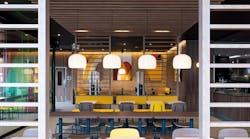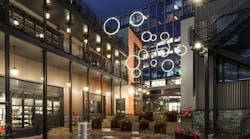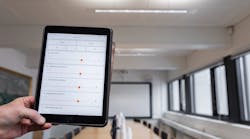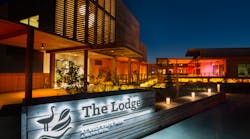The LED lighting scheme was able to fulfil the exacting conservation requirements of the museum. “The point was literally to present the objects in the best possible light. All exhibits are originals, and each of them has its very special aura that we want visitors to be able to feel and experience,” said Sabine Haag, general director of the Kunsthistorisches Museum.
At the heart of the lighting scheme is the Starbrick, developed by Zumtobel in collaboration with Danish-Icelandic artist Olafur Eliasson. The installation includes a total of 51 Starbrick assemblies consisting of four modules each, especially designed for illuminating the unique and sensitive works of art.
The Starbrick’s basic structure is a cube, on whose six surfaces additional cubes have been placed at an angle of 45°. These additional cubes serve as connectors to combine several Starbrick modules.
Additional direct light is supplied by integrated Supersystem spotlights and indirect light is provided by a Panos Infinity module, while one of the Starbrick's surfaces that is directed downwards doubles as emergency lighting.
In addition to LED Supersystem spotlights mounted on the walls, single Supersystem spotlights were also installed in the showcases. Here, the benefits of LED technology were fully exploited, for example by matching the light colors to the colors and materials of the exhibits.
“Illuminating this significant and unique collection in a contemporary way has been a special project for us. In collaboration with architects, designers and Olafur Eliasson we managed to develop a lighting solution that is in line with the new concept of the Kunstkammer, meeting the most demanding conservation requirements and providing the best light for an unrestricted enjoyment of art,” said Reinhardt Wurzer, director international projects, Zumtobel Lighting.







